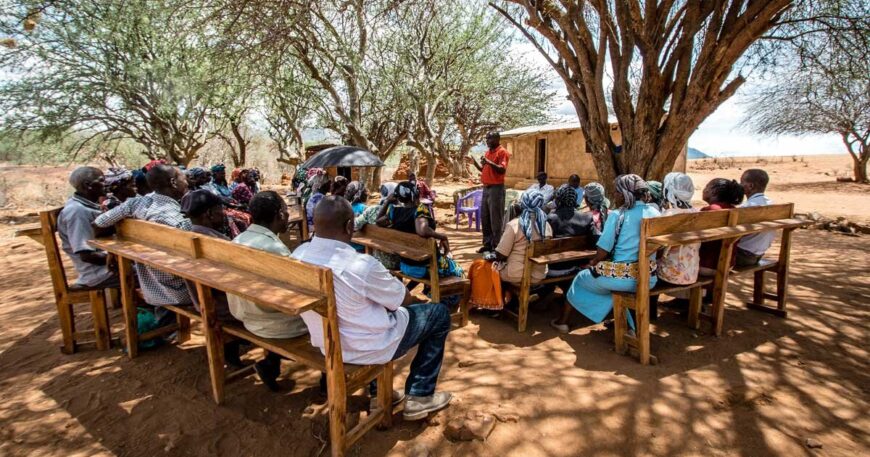Introduction
Conflict assessment is a critical initial step in the process of conflict management and resolution. Understanding the dynamics of relationships and conflicts within a community is essential for promoting reflection among stakeholders and determining the need for intervention. KCOMNET, through Umoja Radio for Peace, conducted a conflict assessment project targeting 41 community radio stations. This article examines the report’s key findings, focusing on conflict structures, emerging issues, factors contributing to prolonged conflict, actors involved, and the role of community radio stations in promoting peace.
Background
The conflict assessment project by Umoja Radio for Peace aimed to reevaluate the conflict environment within the 41 community radio stations. The study sought to identify root causes, actors, potential consequences, and conflict resolution methods. It builds upon a 2016 assessment, aiming to validate previous findings and explore new conflict needs within communities.
Methodology
The conflict assessment involved mapping out conflict structures, actors, and dynamics in the operational areas of the 41 community radio stations. Data collection methods included focus group discussions and key informant interviews with community radio journalists. Thematic analysis was employed to identify patterns and recurring themes in the collected data.
Analysis of Conflict Structures
The analysis revealed various conflict structures within the geographic areas of broadcast, with political and governance conflicts being the most prevalent (13.6%). Other significant conflict structures included competition for scarce resources (12.9%), land and boundary issues (12.6%), and issues related to alcohol and substance abuse (9.6%). Understanding these structures is vital for effective conflict resolution strategies.
Emerging Issues within Areas of Conflict
Key emerging issues included human-wildlife conflict and land and environmental issues (31.3%), interethnic clashes (17.9%), resource scarcity and cartel control (17.9%), political interference and poor governance (12.9%), sexual and gender-based violence (10.4%), and poor lifestyle choices by the youth (9.5%). Addressing these emerging issues is crucial for preventing conflicts from escalating.
Factors Contributing to Prolonged Conflict
The study identified factors contributing to prolonged conflict, including land and environmental factors (16.9%), unequal distribution of resources (13.4%), conflict due to ignorance and illiteracy (12.6%), poor governance and corruption (11.6%), and political influences (9%). Recognizing these factors is essential for designing effective conflict resolution interventions.
Main Actors in the Conflict Situation
Youth and community members (28%) were identified as the primary actors in conflicts, followed by politicians (20.9%), local administrators and area elders (19%), government and security operators (17.2%), the business community and cartels (7.8%), and bandits (7.1%). Understanding the interests of these actors is crucial for targeted conflict resolution efforts.
News Sources Related to Conflict
Community media sources primarily relied on local administration (20.7%), community members (20.7%), civil society and NGOs (14.1%), and government (13.3%) for information on conflicts. Recognizing these sources helps community radio stations provide accurate and unbiased reporting.
Peace-Related Programs in Broadcasting
While only 15% of community radio stations had exclusive peace-related programs, 85% incorporated peace-related content in their regular programming. The objectives of dedicated peace programs included creating awareness, encouraging cohesion, providing hope, inviting peace-building stakeholders, and facilitating discussions on peace-related issues.
Role of Governments in Promoting Peace
County and national governments were expected to formulate policies, promote education, create awareness, empower agencies, provide economic opportunities, uphold human rights, and resolve conflicts peacefully. Recognizing the role of governments is essential for collaboration in peace-building efforts.
Feedback on Peace-Related Programs
Community radio stations received both positive and negative feedback on their peace-related programs. Positive feedback highlighted the importance of these programs during conflicts, while negative feedback included concerns about being off-air and unresponsive local leaders.
Collaboration with Partner Institutions
Partner institutions such as NGOs, CBOs, faith-based organizations, the business community, and governments played a crucial role in developing programs to address conflict. Strengthening partnerships can enhance the effectiveness of conflict resolution initiatives.
Legal Frameworks for Conflict Prevention
While the legal framework for community radios exists, 56% of respondents felt it was insufficient. Strengthening and implementing legal frameworks are vital for ensuring that community radio stations can operate effectively in conflict resolution.
Conclusion
Community radio stations are instrumental in conflict resolution and peace-building efforts. The conflict assessment findings provide valuable insights for designing targeted interventions. However, challenges such as limited resources, inadequate infrastructure, and a lack of qualified staff need to be addressed for community radio stations to realize their full potential.



